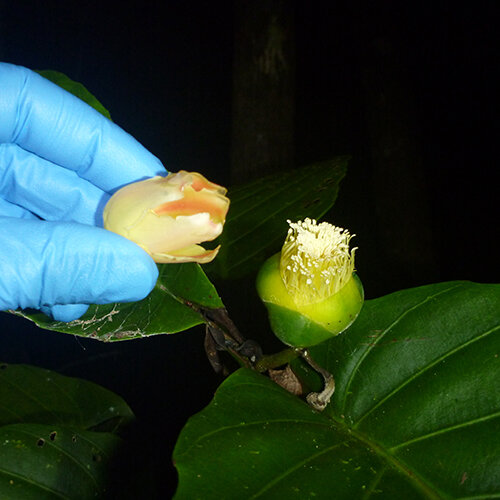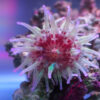Many island bats are at risk of extinction, yet bats are proving essential in the survival of one of the world’s most unusual plant species.
In a world first discovery, a team of researchers led by the University of South Australia have uncovered that blossom bats play a unique role in the pollination of the Fijian Dillenia biflora trees.
Known locally as kuluva, the trees belong to the Dilleniaceae family, whose position in the evolutionary tree of flowering plants remains a mystery.
Until now, this plant family was believed to offer no nectar reward and be pollinated principally by bees. But when bite marks were found on the flowers’ corollas and pollen in the dietary samples of three bat species, the team knew they were onto something important.
“We discovered that the kuluva flowers never opened on their own, and instead were being pulled off by blossom bats that were after the sugar-rich nectar inside,” says UniSA’s Associate Professor S. “Topa’ Petit.
“The bat lands on a whorl of leaves, removes the corolla, and licks the nectar, covering its nose with pollen in the process. The pollen on the bat is then transported to other flowers of the same species, which are pollinated and produce fruits containing seeds.”
“Kuluva flowers have only one chance of being pollinated. Each is mature and receptive for one night only. But because the petals of kuluva flowers are permanently closed, if their corolla is not removed, the flower will die without reproducing.”
This is the first time that this process has been observed. The new pollination system is called chiropteropisteusis (bat reliant).
The discovery is significant as the phylogenetic Dilleniaceae is one of the last mysteries in the evolution of flowering plants, and the new information may shed new light on this missing piece of the puzzle.
“Our discovery has the potential to facilitate the conservation of several threatened tree and bat species across countries,” Assoc Prof Petit says.
“In Fiji, blossom bats are a threatened species. Given that 70 percent of the bats’ dietary samples contained kuluva, it’s obvious that the bats rely heavily on this tree for food.
Similarly, the kuluva tree depends entirely on the bats for reproduction.
“Considering the threatened status of several Dillenia species in different countries, their potential association with bats needs urgent attention, particularly since so many bat species are also threatened.”
The researchers stress the need to understand the co-dependence of different species: without blossom bats some Dillenia trees may not survive; without these trees, some threatened bat species may also become extinct.
“We are currently establishing collaborations in other parts of the Dillenia range,” Dr. Petit says. “Urgent conservation action is needed, and many nocturnal discoveries await. It’s time for botanists and ecologists to stay up late.”
More information:
Sophie Petit et al, A novel bat pollination system involving obligate flower corolla removal has implications for global Dillenia conservation, PLOS ONE (2022). DOI: 10.1371/journal.pone.0262985
Provided by
University of South Australia
Citation:
The secret lives of bats reveal botanical mysteries (2022, February 4)



